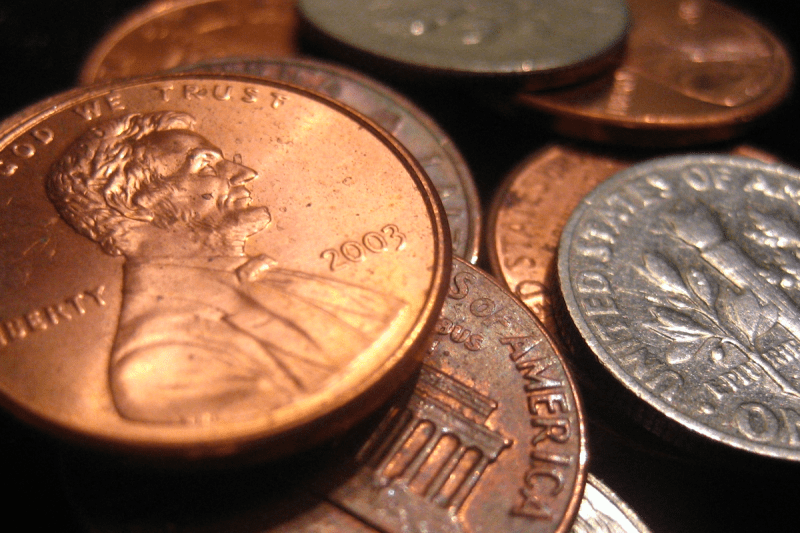
We aren’t here to praise the penny, but rather, to bury it. The penny, and its counterparts, have been vanishing all around the world as the cost of minting one far outweighs its value. But hackers had already lost a big asset: real copper pennies, and now even the cheaply made ones are doomed to extinction.
If you check your pockets and find a pre-1982 penny, it’s almost all copper. Well, 95% of its slightly-more-than-3-gram heft is pure copper. Since then, the copper penny’s been a fraud, weighing 2.5 g and containing only a 2.5% copper plate over a zinc core. During WWII, they did make some oddball steel pennies, but that was just a temporary measure.
Penny Science
If you are a certain age, you might remember building a “voltaic pile.” These primitive batteries use pennies, cardboard soaked in vinegar, and aluminum foil. Granted, it wasn’t very practical, so raiding your couch for change to make a battery was never really practical, but it was a fun science experiment. There are dozens of YouTube videos showing this popular experiment, including the [ScienceBuddies] video below.
Old pennies were also a cheap and easy source of copper. Vinegar or lemon juice and some voltage made it simple to copperplate another metal object, like a nail. Copper also makes a good heatsink. We’ve seen Raspberry Pis and similar boards with heatsinks that cost an integer number of pennies, because that’s all they were. An oxidized penny shows up in some foxhole radios. They were also handy little weights if you made a balance or for taming a wobbly ceiling fan.
If you were a real kid chemist, you might have done the classic trick of turning a penny into “silver” and then “gold.” You used not-so-lovely-to-handle sodium hydroxide, some zinc, and a flame to actually convert the penny to brass. It wasn’t really a precious metal, but still a good trick if you were a kid with a chemistry set. As the video from [Simon] below shows, that will still work with the copperplate pennies.
New Pennies
Not that you can’t have fun with zinc pennies. If you scratch the plating a bit and dip it in HCL, the zinc core fizzes away. What’s left is a hollow copper penny. If you don’t like using HCL, we hear you can do it over a stove and simply melt the zinc. We wouldn’t try either one of those without a vent hood and an unhealthy disregard for your personal safety, so, you know, don’t do that. But know that you could. [Craig] shows how to remove the zinc or the copper in the video below.
The legality of all this has always been a little suspect. Since 2006, it has been illegal to melt down coins for their metal value. Technically, using it in a science class probably won’t bring the Treasury agents swooping into your classroom, but you have been warned.
Household Hacker
Of course, it is going to take some time for all the pennies to really vanish. There are plenty of them, and you can still get around a hundred for a buck. But when they are gone, what other household items are easy to hack for science? Aluminum foil, maybe? Tell us your favorite in the comments.
Whether they were copper slugs or thinly plated zinc tokens, pennies were a weirdly perfect hacker material: cheap, conductive, sacrificial, and everywhere. We’ll miss them.
Featured image: “wealth of pennies” by [Reza]
This articles is written by : Nermeen Nabil Khear Abdelmalak
All rights reserved to : USAGOLDMIES . www.usagoldmines.com
You can Enjoy surfing our website categories and read more content in many fields you may like .
Why USAGoldMines ?
USAGoldMines is a comprehensive website offering the latest in financial, crypto, and technical news. With specialized sections for each category, it provides readers with up-to-date market insights, investment trends, and technological advancements, making it a valuable resource for investors and enthusiasts in the fast-paced financial world.
